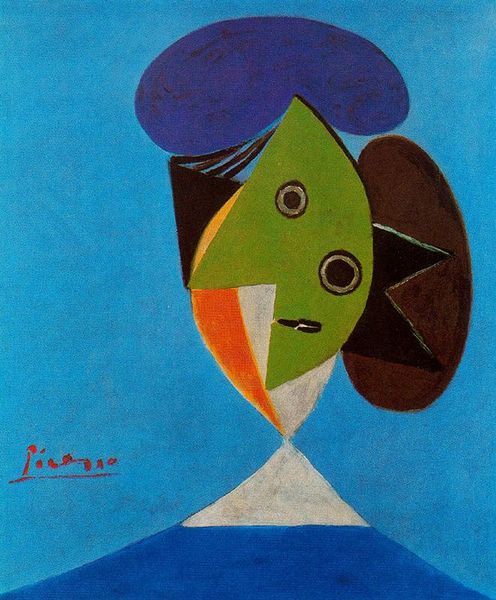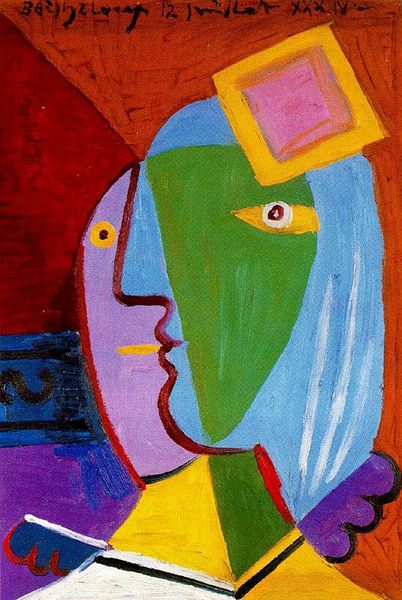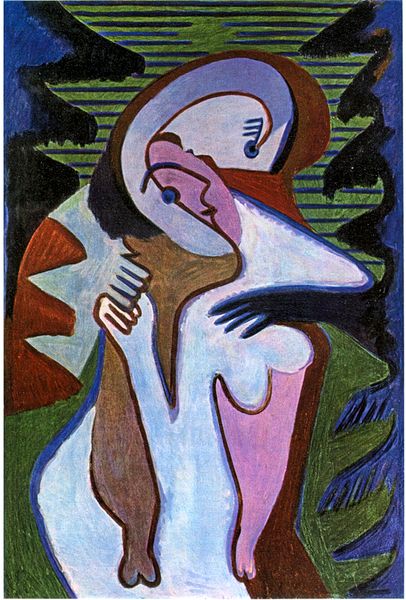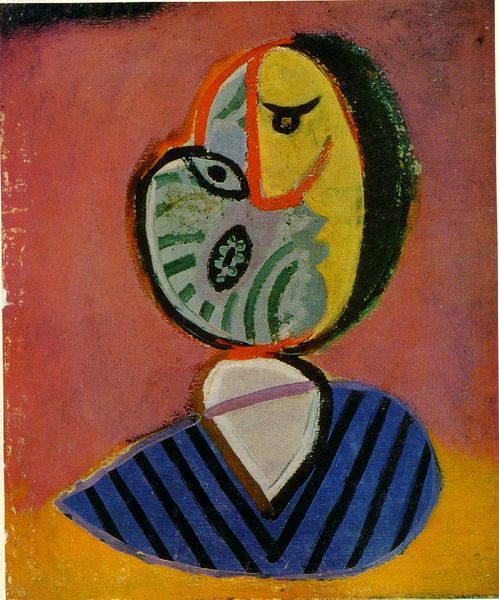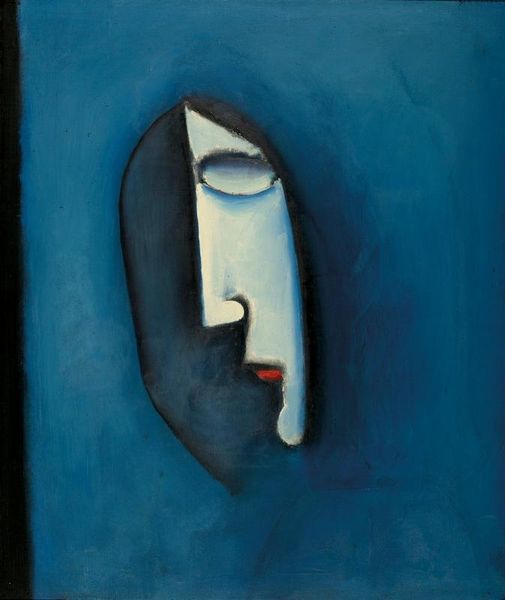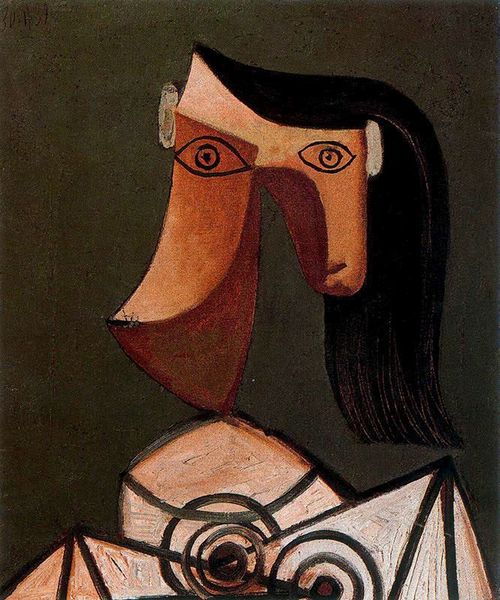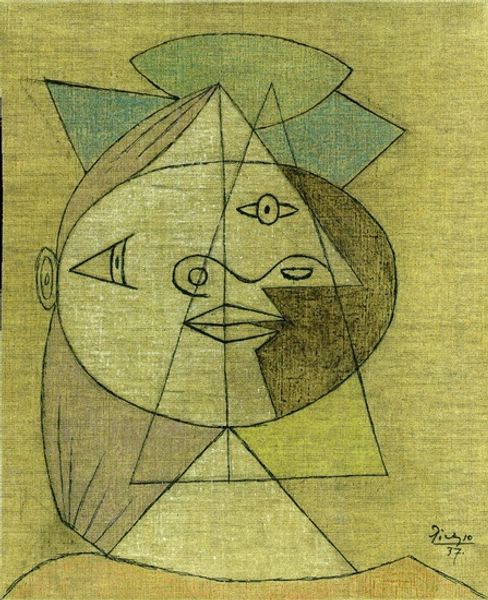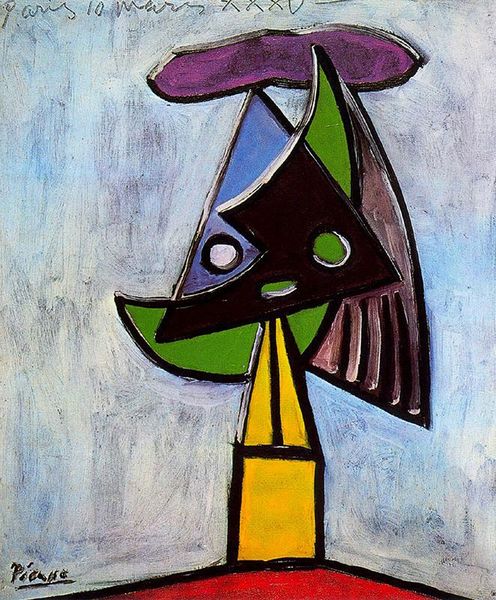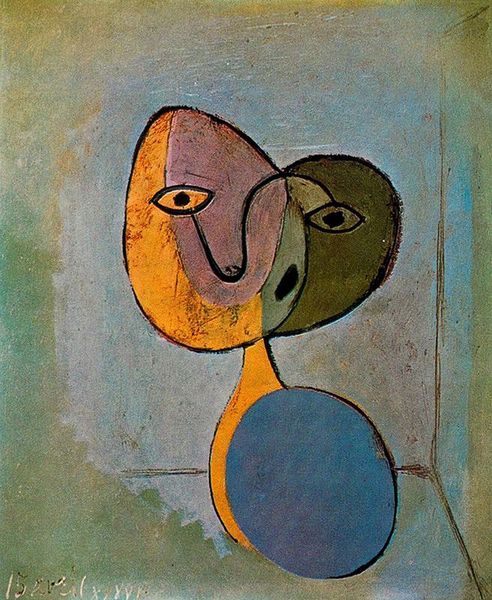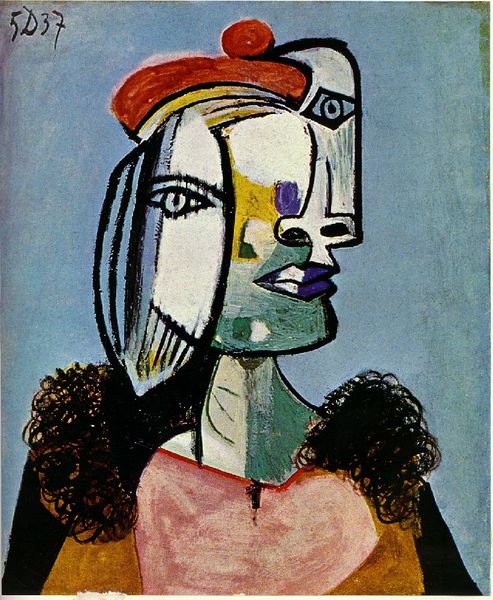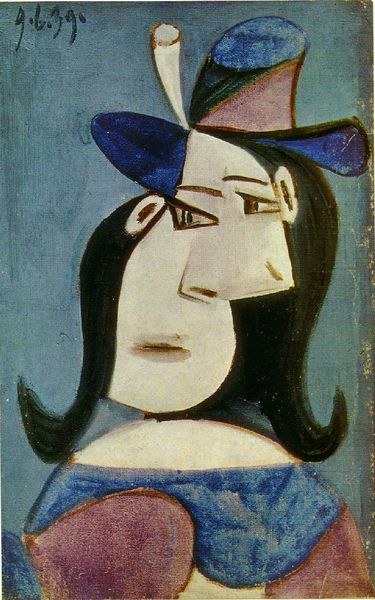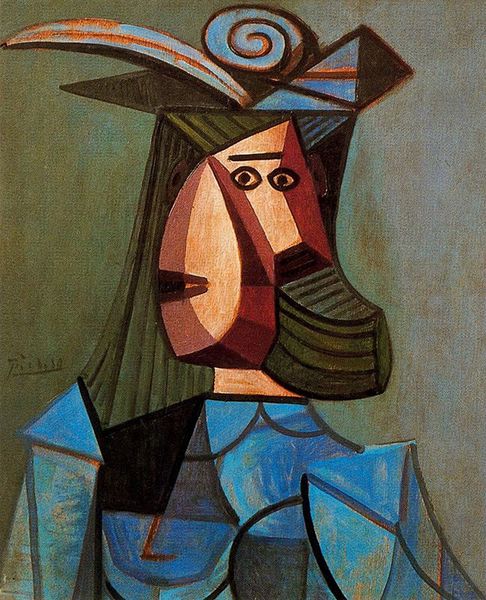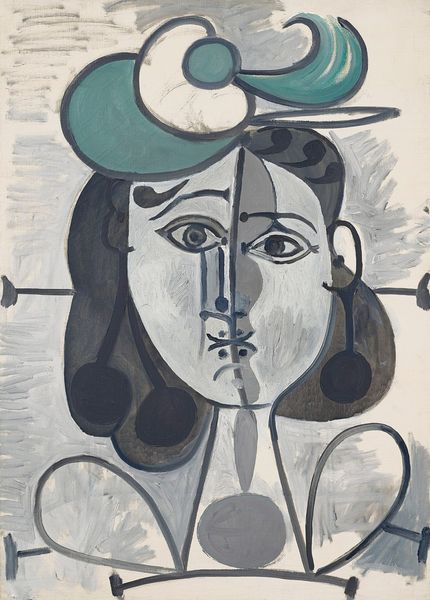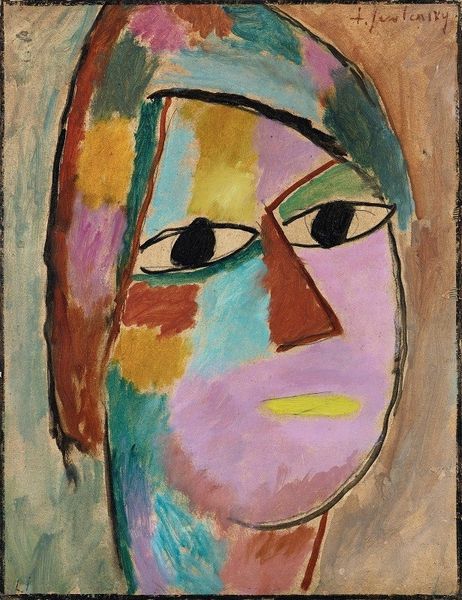
painting, oil-paint
#
portrait
#
cubism
#
painting
#
caricature
#
oil-paint
#
caricature
#
pop art
#
modernism
Copyright: Pablo Picasso,Fair Use
Editor: Here we have Picasso's "Woman with Hat (Olga)," painted in 1935 using oil paint. It's such a striking image. The way he deconstructs the face into geometric shapes… It feels almost confrontational, a distorted mask of femininity. What do you see in this piece? Curator: I see a fractured portrait, a representation that goes beyond mere physical likeness and delves into the complex power dynamics of Picasso’s relationships. This was painted during a turbulent period in his marriage to Olga Khokhlova. Understanding this context, we can see the portrait as a critique, even an unmasking, of societal expectations imposed on women. The distorted features—the sharp angles, the unsettling colors—what do these choices communicate, particularly when we consider prevailing beauty standards? Editor: So, the distortions aren’t just aesthetic; they're loaded with social commentary? I hadn't thought of it that way. Curator: Exactly. Think about Cubism as a movement; it aimed to break down traditional modes of perception. In this case, it reflects the breaking down of a relationship, and the imposed image of what it means to be a "woman". What feelings do those unsettling colors evoke for you? Do they amplify a sense of unease? Editor: Yes, definitely. The jarring green and the almost ghostly white... It does create a sense of unease and disharmony. It feels like a commentary on a strained relationship, definitely changing my perception. Curator: Precisely! By understanding the historical and social context, along with the artist's personal life, we can unearth a deeper understanding of the artwork. Editor: I learned to consider both formal artistic elements alongside cultural context to find art's activist agenda. Curator: Likewise, recognizing art as a reflection of society urges us to question it with ever new views and diverse backgrounds.
Comments
No comments
Be the first to comment and join the conversation on the ultimate creative platform.
